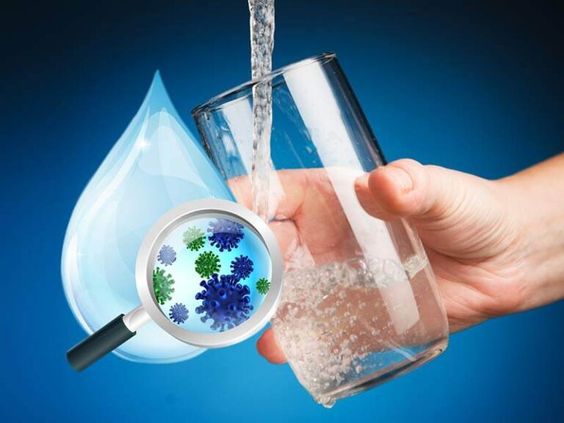Safe, clean drinking water is something that we often take for granted living in the developed world. We turn on the tap, fill up a glass, and drink up without much thought about what’s actually in the water we’re ingesting. However, water quality issues can and do occur, even in places like Massachusetts, underscoring the importance of regular water quality testing. In this blog post, we’ll take a closer look at water quality in Massachusetts, discuss some of the potential contaminants and health impacts, and explain why periodic water quality testing in Massachusetts is so essential.
Water Sources and Distribution in Massachusetts
To understand the significance of water quality testing in Massachusetts, it helps to first look at where our water comes from and how it reaches the tap. Massachusetts relies on a few key sources for drinking water: reservoirs, groundwater aquifers, and sometimes imported water from neighboring states. The Quabbin and Wachusett Reservoirs located in central Massachusetts provide most of the water supplying the eastern part of the state, including the Boston metropolitan area. Meanwhile, many communities in western Massachusetts depend primarily on groundwater wells and small reservoirs.
Once water is drawn from these various sources, it travels through an intricate network of water mains, storage tanks, and smaller distribution pipes, many over a century old, before finally emerging from the tap inside our homes. All along this journey, the water interacts with the environment, infrastructure, and various potential contaminants that underscore the critical need for frequent water quality testing Massachusetts residents rely on for health and safety.
Health Risks from Water Contaminants
One reason we test drinking water is to monitor levels of various contaminants that could negatively impact human health if consumed over long periods. Key categories of common water contaminants include:
- Microorganisms – Disease-causing bacteria, viruses, protozoa and other microbes that can produce gastrointestinal illness.
- Inorganic chemicals – Toxic metals like lead and arsenic, nitrates/nitrites, asbestos fibers that leach from distribution pipes and natural deposits.
- Organic chemicals – Pesticides, industrial chemicals, methane, detergents, pharmaceuticals.
- Disinfectant byproducts – Chlorine, chloramine remaining from municipal water treatment processes.
- Radionuclides – Radioactive particles that occur naturally in some groundwater.
The health consequences from exposure to elevated levels of these contaminants range widely, from mild digestive upset or skin irritation to serious Conditions like cancer or organ damage, depending on the type and concentration of the substance. At particular risk are vulnerable populations like young children, immunocompromised individuals, and the elderly. Of course, no one wants to gamble with water quality, underscoring the real benefits of vigilant water testing initiatives.
Water Quality Testing Massachusetts Regulation and Policy
Protecting public health through drinking water oversight represents the core mission of the Massachusetts Department of Environmental Protection (MassDEP). This agency enforces state and federal regulations related to monitoring, treating, and distributing potable water. Key laws that shape local testing policies include:
● The Federal Safe Drinking Water Act (SWDA) – Establishes national standards for drinking water quality, testing protocols, public notices of violations, and infrastructure policies which states then adopt and enforce.
● Massachusetts Drinking Water Regulations – Incorporates federal SDWA provisions plus additional state-level requirements for water testing frequency, allowable contaminant concentrations and reporting duties. Updates testing demands as new hazards emerge.
● National Primary Drinking Water Regulations (NPDWR) – Legally enforceable standards limiting public water system contaminant levels issued by the EPA under the SDWA’s authority.
Adhering to this web of drinking water regulations represents a balancing act for municipal water departments and private suppliers aiming to deliver clean, great tasting H2O while also limiting costs for ratepayers. Periodic investment in treatment upgrades or replacement of older distribution lines often proves necessary to maintain compliance. For individuals relying on private residential wells, regular water quality testing Massachusetts labs offer the only way to ensure your family’s water stays safe, since these supplies remain wholly unregulated.
How Massachusetts Water Gets Tested
Responsibility for overseeing water quality testing in Massachusetts depends primarily on whether you live in an area serviced by a public municipal system or rely instead on a private well. For the majority of Massachusetts residents hooked up to public water, regular testing happens at the treatment plant before distribution and additional monitoring occurs out in the pipes flowing to consumers’ taps. The MassDEP sets schedules and protocols for analyzing samples collected from designated sites across town. Testing frequency varies from quarterly for basic parameters like coliform bacteria and pH levels up to every 9 years for rarer contaminants like radium or cyanide.
Most municipal or regional water districts maintain full-time staff to handle collecting samples, conducting some on-site analyses, and shipping batches to state certified labs for additional toxicity screens and microscopic analyses. Results then get reported to MassDEP and EPA databases tracking compliance. If tests reveal any violations or concerning trends, officials inform consumers through public notices. Additional monitoring and maintenance kicks in to solve the water quality issue.
For homeowners relying on private wells, spring boxes or lakes for drinking water, responsibility for quality testing falls entirely upon the owner. Only by contracting an annual lab analysis can well owners verify the water remains free of harmful levels of naturally occurring elements like arsenic, radon or uranium that could enter the groundwater. Local health departments strongly advise well testing after floods or heavy rains which can wash contaminants down into aquifers. Because well water avoids government oversight, vigilant water quality testing Massachusetts offers the only assurance your family gets protected.
ParameterWater Quality Standards and Testing Methods
The extensive battery of water tests conducted analyze over 100 potential contaminants using diverse methods to determine if they meet EPA and Massachusetts regulatory standards. Rather than list them all, we’ll highlight examples from major contaminant classes:
Microbes: Disease-causing bacteria and protozoans represent serious health hazards, with something as seemingly harmless as E. Coli triggering kidney failure in susceptible populations if consumed over months. Water systems use presence/absence tests for total coliforms and specifically E. Coli as red flags for possible contamination. Heterotrophic plate counts also indicate microbial growth problems. Protozoans like Cryptosporidium undergo antibody based-assays to elevate detection sensitivity.
Inorganic Chemicals: Metals like lead, copper, arsenic and selenium appear at highly toxic doses long before tasting or looking unusual. The EPA and state protocols require testing for over 15 regulated metals using mass spectrometry methods to precisely quantify metal concentrations to parts per billion levels.
Organic Compounds: Hundreds or volatile organic compounds like industrial solvents, pesticides or herbicides may require testing near agricultural or factory zones. Chromatography methods like high performance liquid chromatography (HPLC) offer the benchmark for accurately surveying some 60+ organic contaminants.
Disinfectant Byproducts: Added residual chlorine or chloramine should hover at safe yet effective background levels. Colorimetric kits allow water departments to economize by confirming adequate leftover disinfectant before resorting to more expensive total organic halogen tests needed to detect higher risk byproducts like trihalomethanes.
As this short survey suggests, clean water relies on a diverse chemistry toolkit – from microbiology cultures to spectrometry – to fully monitor drinking water safety. Compliance further requires significant resources and expertise testing numerous metrics, underscoring the value of preventative long term monitoring.
Private Well Water Testing Challenges
For homeowners dependent on wells, springs or lakes, regular water testing provides the only way to monitor threats to health, especially after heavy rains or flooding. However real barriers like convenience, cost or uncertainty about procedures leads many to skip out on sampling.
Inconvenience poses a major deterrent, as collecting samples requires carefully following protocols on bottle prep, sampling points, amounts and handling before rushing the bottles to the water quality testing Massachusetts lab under strict hold times. Braving early morning lines at the state public health lab or driving specimens to faraway labs often deters users. Mailing samples raises concerns about meeting hold times. Unfortunately skimping on quality protocols undermines results.
The costs of tests spanning the gamut of potential well water contaminants also adds up quickly to several hundred dollars for robust quality scans. Although paying out of pocket, well owners fail to realize the long term savings possible from early detection of easily treated problems like high arsenic. Catching a problem before the whole family gets exposed saves money and health down the road.
Simple uncertainty about what tests to request for new well owners proves understandably overwhelming. With little guidance on risks unique to their neighborhood’s hydrogeology, homeowners may hesitate to pay for unneeded assays. At the same time, they miss out on sampling key markers flagging common groundwater contamination. Working with local water treatment professionals or health officials when designing a testing plan takes the guesswork out.
Partnering with qualified environmental labs that offer convenient bundled testing packages, like those providing courier transport of samples to their facilities, helps minimize the running around while still catching important contaminants of concern for well water quality and public health.
When should you Test your Water?
For those served by municipal water systems, responsibility for routine testing falls to your water supplier as they adhere to regular monitoring required under state and federal regulations. Still, households may want to perform periodic confirmatory tests to verify their section of the distribution grid doesn’t have issues like localized lead contamination from old service lines or internal pipes. Child care centers and schools may test more frequently to safeguard vulnerable populations.
Private well owners should test every year to detect any emerging contaminants or identify sudden spikes indicating contamination events. It also smart to test in these scenarios:
● Upon moving into a new home with an existing well
● After flooding, storm damage, or a prolonged drought
● If you notice a change in water taste, smell, or color
● After replacing or working on well equipment like replacing the pump
● Before drilling a new well to establish baseline quality data
What to Test For in Massachusetts Well Water
Review state public health recommendations and talk to your local expert to tailor a testing regimen that screens for contaminants known to occur in the surrounding area based on prior surveys and geology while also covering all federally regulated drinking water pollutants. Often experts will advise checking these markers:
● Total coliform bacteria – Signals possible pathogen contamination from animal/human waste requiring emergency chlorine disinfection.
● Nitrates/nitrites – Runoff from livestock facilities and septic systems carry into groundwater where over 5 ppm causes blue baby syndrome.
● Metals Suite – Arsenic, lead, copper, iron, manganese, chromium and more
● Mineral analysis – Sodium, chloride, manganese, sulfates, hardness for recommendations on treatment systems to remove unpleasant salts or metals affecting taste/staining.
● Organics – Gas chromatograph scans for solvents, cleaners, petroleum from leaky underground tanks nearby
● Radiological contaminants – Radium and radon often sneak into household air and drinking water from natural granite bedrock deposits.
While this list seems broad, think of the one-time upfront costs as an investment shielding your family’s health for years to come.
Conclusion
Reliable access to clean drinking water may feel like an expectation living in a state like Massachusetts. But sustaining public health necessitates diligent work monitoring emerging threats through water quality testing Massachusetts labs provide for public utilities and private well owners alike. Supporting adequate funding and smarter policies around water infrastructure also helps avoid disasters like the lead poisoning crisis that resulted from corrosive water interacting with aging service lines in Flint, Michigan. Only sustained investments in treatment and testing ensure we catch problems early before public health suffers. Questioning and understanding your own water quality means you can better advocate for community-wide solutions that protect everyone.










